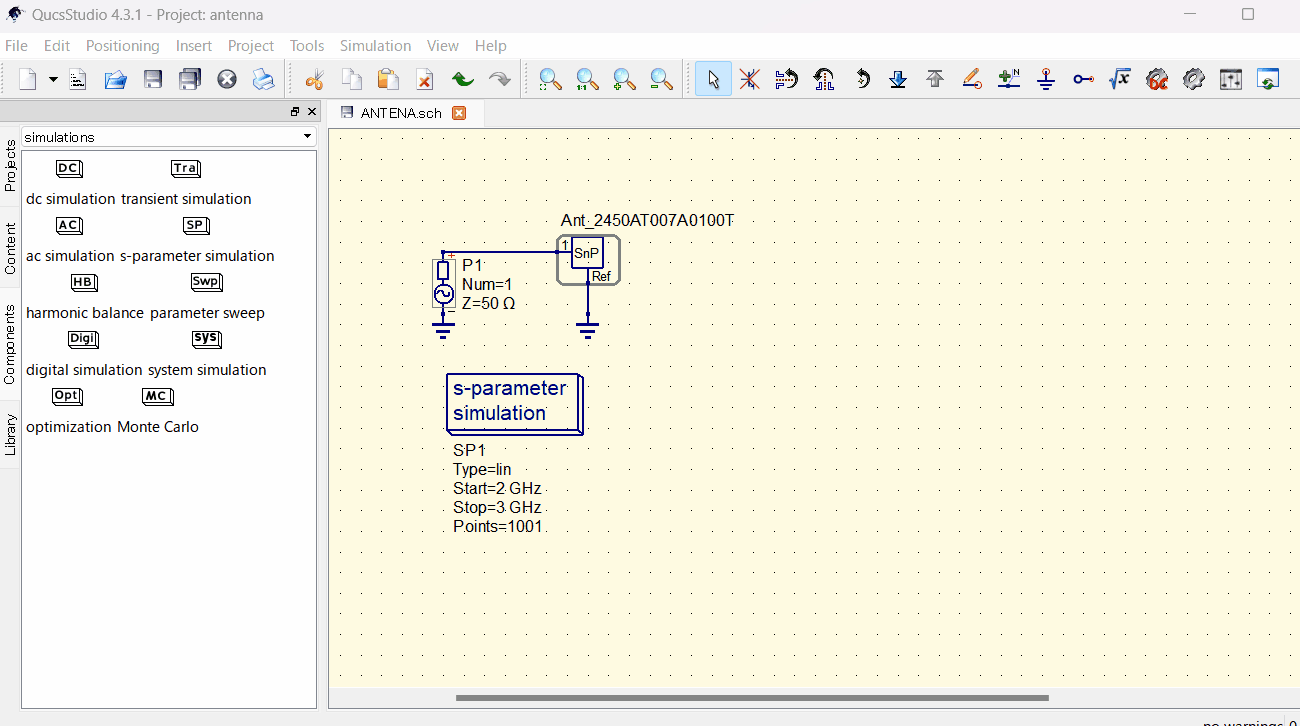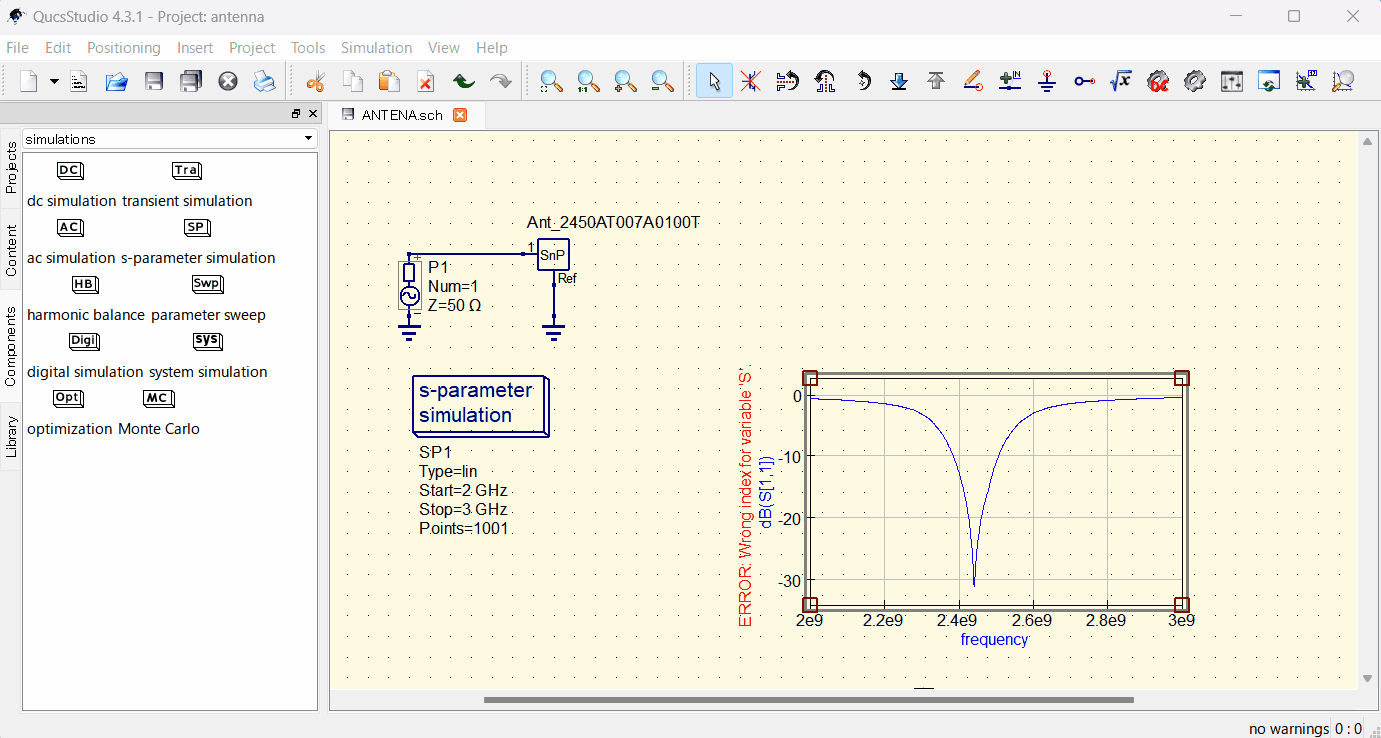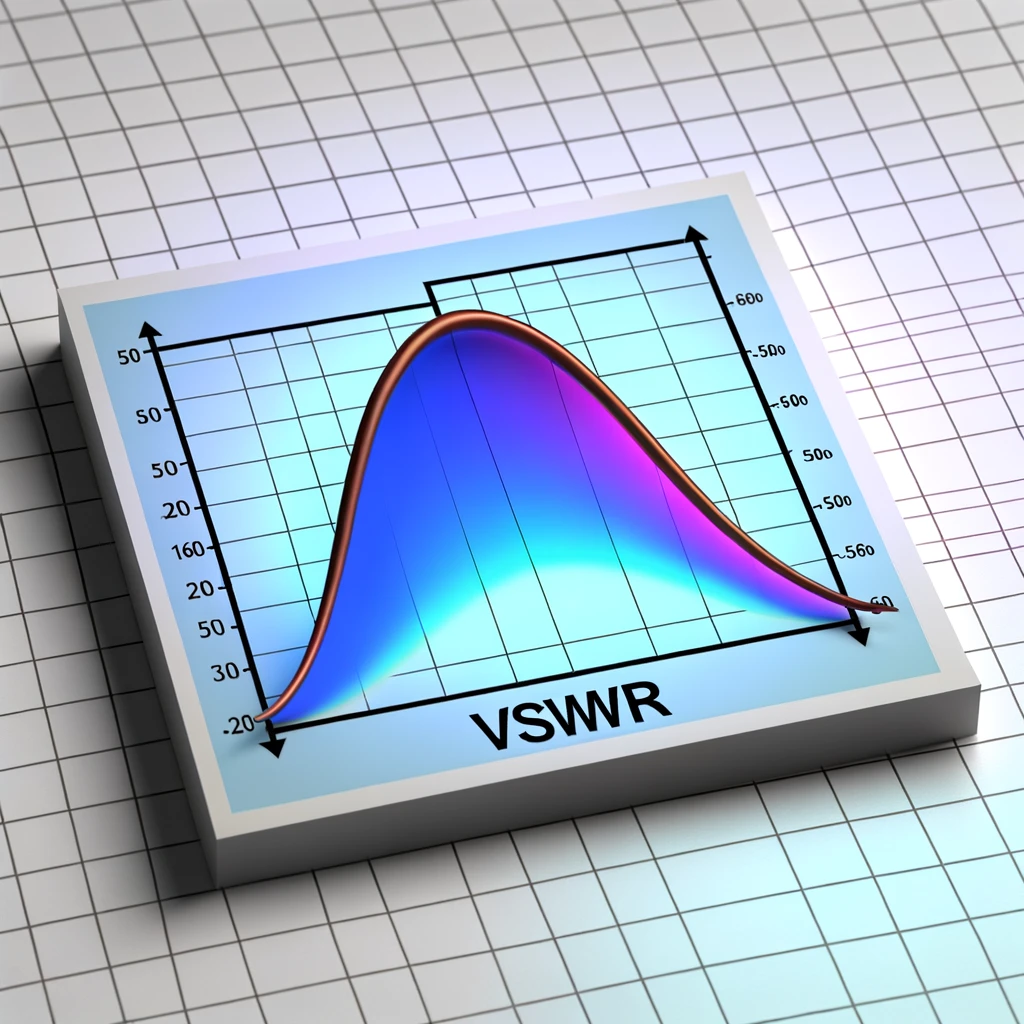VSWR: From Basics to Antenna Performance Evaluation
VSWR is an important metric in the design and evaluation of antennas and RF transmission paths. This article explains the concept of VSWR, its measurement methods, and the process of displaying a VSWR graph from the antenna’s S parameters using QucsStudio.
What is VSWR?
VSWR (Voltage Standing Wave Ratio) represents the ratio of the maximum to minimum amplitude of standing waves formed when a portion of a high-frequency signal is reflected as it travels through a transmission path. Ideally, the value of VSWR is 1, indicating perfect impedance matching between the transmission path and load. A higher VSWR value indicates poor matching and increased reflections, adversely affecting communication quality.
Measuring and Calculating VSWR
VSWR measurement is conducted using a dedicated VSWR meter or a network analyzer. These devices measure the amplitude of the forward and reflected waves, calculating VSWR using the following formula:

Here, Γ (gamma) is the reflection coefficient. A smaller absolute value of the reflection coefficient indicates better matching.
The Importance of VSWR
When the VSWR value is close to 1, indicating ideal impedance matching, almost all the supplied power is utilized by the antenna. This signifies a state of high transmission efficiency or reception sensitivity, optimizing the quality and range of communication. Conversely, as the VSWR value increases, indicating poorer matching, part of the power supplied to the antenna is reflected and lost, degrading the performance of the antenna system, reducing transmission efficiency, and worsening reception sensitivity. For example, it is desirable for an antenna to have a VSWR value of 1.5 or less, meaning that the reflected power is below 4%.
VSWR and Return Loss
Return loss, closely related to VSWR, indicates how much of the power supplied to the transmission path is consumed by the load without being reflected, typically expressed in decibels (dB). A higher return loss means less reflection and better matching. Return loss is calculated using the following formula:
Return Loss = -20 log10 |Γ|
VSWR and return loss are used complementarily to evaluate the matching state of a transmission path.
Displaying VSWR Graphs Using QucsStudio
QucsStudio is a software tool for electronic circuit design and simulation. It measures the S parameters (scattering parameters) of antennas and other high-frequency components and calculates and displays VSWR based on them.
Here’s how to display an S parameter graph using QucsStudio:
We will use the S parameters of the 2.4GHz band chip antenna 2450AT07A0100001T by JHOHANSON, which can be downloaded from the web 2450AT07A0100001T.
- Open QucsStudio: Launch QucsStudio and create a new project.
- Import the S parameter file: Navigate to the ‘Project’ view’s ‘Components’ tab, select ‘s-parameter file’ from ‘system components’, place the s-parameter file component on the circuit diagram, double-click to open the property window, set the number of ‘Ports’, and select the S parameter file in the ‘File’ property.
- Run the simulation: Add a power source and perform an S parameter simulation.
- Create a graph: From the ‘Insert’ menu, select ‘Diagram’ and add a ‘Cartesian Diagram’ to the project. Go into the diagram settings, choose the return loss data dB(S[1,1]) from the ‘Data’ tab, and create the graph. (This may be automatically created after running the simulation.)

The graph displayed here is for return loss. Although it shows minimal reflection between 2.4–2.5GHz, it’s visually difficult to judge, so we’ll change it to a VSWR graph.
Double-click the graph to display properties.
Select the dB(S[1,1]) graph and rewrite it to vswr(S[1,1]).

With just this change, it’s possible to convert to a VSWR graph. Compared to the display of return loss, the VSWR graph visually makes it easier to see the antenna’s resonant range.
This article introduced the basic principles of VSWR, its calculation method, and the steps to display a VSWR graph from the antenna’s S parameters using QucsStudio. VSWR is an essential metric for evaluating the impedance matching state of an antenna and optimizing the performance of communication systems. Through this guide, we hope you gain a deeper understanding of VSWR and apply it to the design and evaluation of antennas.



Comment